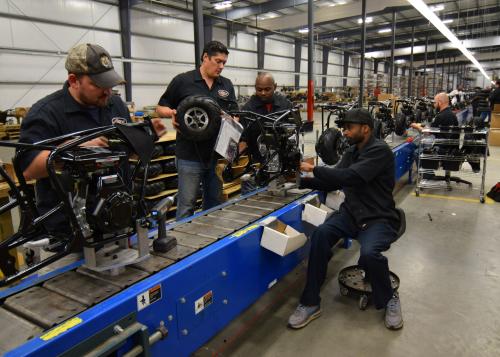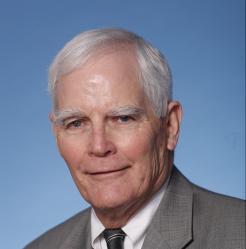This article originally appeared in the Washington Post on July 25, 2018.
No, the Trump administration did not declare victory in the war on poverty, as recent media coverage and a chorus of mocking pundits have suggested. Instead, the White House, subsequently bolstered by the recommendations of its Council of Economic Advisers, moved to expand the sort of dignity-enhancing work requirements for welfare recipients that was pioneered — with bipartisan support and to wide acclaim—during the Clinton administration. Trump’s executive order gave secretaries in the appropriate departments 90 days to review existing programs and recommend changes.
In 1996, President Bill Clinton and a Republican-controlled Congress collaborated on the Personal Responsibility and Work Opportunity Act. The law aimed to reduce dependency by requiring non-disabled working-age recipients to find a job within 24 months of starting to receive cash welfare payments. President Trump is taking a page from that welfare-reform playbook, seeking ways to add or strengthen work requirements for noncash benefits such as Medicaid, housing assistance and the Supplemental Nutrition Assistance Program, or SNAP, also known as food stamps.
Before the war on poverty began in the 1960s, the nation’s spending on welfare programs was negligible. Today, between the federal government and the states, the United States spends nearly $1 trillion on these programs annually, according to Congressional Research Service reports. Originally conceived of as a safety net for those unable to work and as a temporary support for those seeking employment, welfare instead expanded so widely that it nurtured a semi-permanent state of dependency — one that persists for millions of people today.
Consider these findings by the Council of Economic Advisers: Adults who are not disabled and are 18 to 64 years old — of working age, in other words — make up 61 percent of Medicaid recipients, 67 percent of food stamp recipients and 59 percent of those receiving rental housing assistance. “The majority of these adult recipients worked few if any hours each week while receiving benefits,” the council wrote. The SNAP program has work requirements, the report noted, but states can obtain waivers based on local economic conditions. In the third quarter of fiscal 2018, eight states and territories received blanket exemptions and 28 received partial ones.
One concern is not just that welfare discourages recipients from seeking work, but that it also encourages jobholders to stop working. A “substantial body of evidence” cited by the council suggests that the increased availability of welfare benefits has correlated with declining employment among non-disabled working-age adults. But the council didn’t take a definitive stand: “Holding aside for the moment the magnitude of this causal relationship, the fact that self-sufficiency has declined along with a dramatic decline in material hardship in recent decades warrants a renewed focus on self-sufficiency.”
With the economy expanding, plenty of jobs are becoming available that could be filled by people who have been collecting welfare benefits.
The council paid particular attention to the possible impact on children of requiring more work effort from parents receiving benefits. The report found several studies showing that parental work and self-sufficiency have long-term benefits for children. But the research isn’t definitive, and some studies indicate that welfare benefits can also have positive effects for children. One promising indicator that parents’ employment helps children could be found in the Clinton-era welfare reforms that added work requirements for cash welfare benefits. The reforms “reduced dependence and increased work for single mothers with children and they did so with little evidence of harm and some evidence of benefit to their children,” the council wrote.
If the 1996 welfare reforms known as Temporary Assistance for Needy Families (TANF) are a model for the Trump administration’s approach, they are also a cautionary tale. Many single mothers went to work, and child poverty fell to its lowest level ever. But the 2000 recession was a setback, as states’ previously successful administering of the program faltered and TANF dollars were shunted to other programs, depriving many eligible poor families of either welfare benefits or employment and training programs.
The success of Trump’s contemplated new approach would hinge on the administration’s ability to coordinate with states to ensure the program’s fair and competent operation. That outcome is by no means guaranteed. A wise first step might be to work with a limited number of highly motivated states to experiment with moving welfare recipients to the job rolls while ensuring that their families are better off.
The war on poverty isn’t over. It may be waged in the future, if the Trump administration succeeds, with more focus on bedrock American principles of hard work and self-sufficiency.






Commentary
Op-edTrump’s work requirements have been tested before. They succeeded.
August 7, 2018